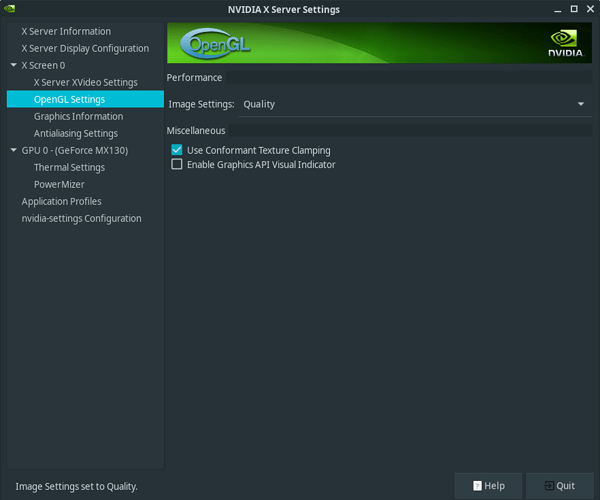
many things in linux can be done by just restarting a service, but everytime a new kernel is needed you actually have to restart If you are allready at that point, just login and enter sudo nvidia-xconfig now Also the installation of the driver ends with the message that the nouveau driver is still active and the easiest solution is to just reboot, without this step you'll end up with system without a graphical interface. Other drivers don't need this config file anymore so it has to be created. nvidia-xconfig creates a nf file that tells the kernel which driver to use. THIS STEP IS CRITICAL: after the installation is finished execute the following command: sudo nvidia-xconfig Sudo apt-get install nvidia-glx nvidia-settings nvidia-xconfig for installing the driver, a little helper program to make it work and the nvidia configuration tool, open up a terminal and copy/paste the following: If not replace nvidia-glx with the package nvidia-detect tells you to use if it tells you that you need "nvidia-glx" your card is still supported by the latest version and you can install the proprietary driver with the commands in the next step. after the install start it by entering: sudo nvidia-detect open up a terminal window and install it with the following command: sudo apt-get install nvidia-detect A little program called nvidia-detect helps you with this because nvidia sometimes decides to not include older cards in the newest driver versions, you need to find out if your card is still supported by the most recent driver (installed by the nvidia-glx package) or whether you might need to install a package with a specific version. Unfortunately you need to now the following steps, since you otherwise might end up with an unusable system that just tells you that it couldn't load the right driver. Furtunately Linux Mint makes it easy to accomplish this.


If your machine is equipped with a Nvidia gpu and you want to make use of it to the fullest, you need to install the proprietary Nvidia drivers.


 0 kommentar(er)
0 kommentar(er)
